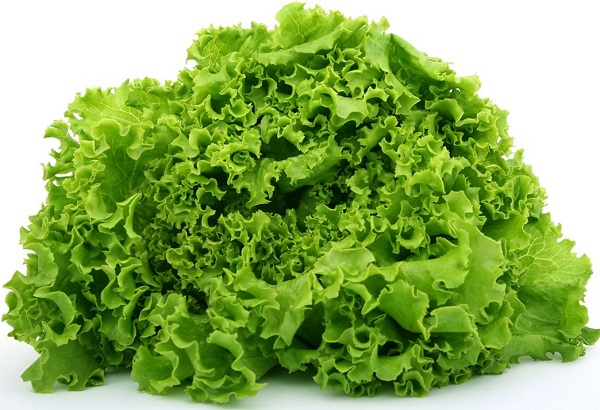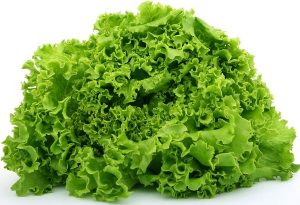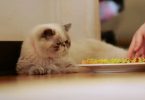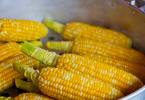You may see your cat stalking around the garden with a stealthy gait and the keen eyes of a top predator that reminds you of his wild carnivorous ancestors. But then he pops inside and starts to munch on your salad, and you are thinking wait, “Can cats eat lettuce? ”
Can cats eat lettuce?
It turns out, and maybe a little surprisingly, that not only is the answer yes, but the cat certainly can eat lettuce. Eating lettuce can be a very beneficial addition to any cat’s diet. Lettuce is low in calories, free of sugar, chemicals, and additives, and is also a good source for hydration. Lettuce also has a property allowing the eater to feel full after eating the leafy greens. Your cat may have a bit of lettuce from time to time and enjoy the vitamins, hydration, and fiber, without any side effects.
Lettuce is largely water
Lettuce, as most people will know, is composed of ninety-nine percent of water. The chewing compound of the leafy green can help clean and floss between your cats teeth. As roughage, the leaf will brush the teeth of your cat clean better than you can. Chewing will also satiate your cats need to chew and eat, naturally reducing their food intake if on a diet. Chewing lettuce will clean the cats tongue, freshen breath, ad hydrate the mouth. Ingesting the lettuce will help clear any waste from the intestines and stomach, and help boost your cats immunity by keeping the digestive system in working order.
Eating lettuce will keep your cat hydrated. Hydrated cats are happy cats, and if your cat is an outdoor animal on a hot day, you may wish to offer bits of lettuce along with the water to ensure your cat does not dehydrate in the hot sun. Before a surgery, you may also wish to offer bits of lettuce to boost the hydration of the blood. Blood flow and circulation is incredibly important in a cat, but before surgery, this area of the cat needs to be looked into and improved if possible.
The bulky nature of lettuce can help control the weight of those cats that seem to never be satisfied when it comes to feeding. Its low calorie content ensures that they can munch on the lettucce without the worry of having to find a way to burn off higher energy foods. Many say that simply chewing the leaves of lettuce burns any calories the lettuce would add to your diet. This trick of offering lettuce to prevent eating regular food is particularly helpful with indoor cats that can find it hard to get the exercise that they would otherwise use to keep the extra pounds off.
Additionally, indoor cats also do not have access to the variety of grasses and weeds available to their roaming cousins. Grasses provide a digestive enzyme that allows them to better digest other vegetables. Cat food only diet is good for your cat in some ways, but adding a bit of natural roughage to the diet of your cat can help simulate the actual diet of its cousins within the cat species. Grass, and other leafy greens are generally eaten by cats and digested well and without side effects. Simulating this eating pattern in an indoor cat is relatively simple by simply offering shredded lettuce in the food dish, mixed with their regular foods.
Do not be alarmed if your cat vomits after chowing down on some greenery, they may just be getting rid of some indigestible material and as the saying goes “better out than in”. The folic acid found in grass and its mild laxative effect can also be a plus expediting the passage of hairballs through the digestive tract. That being said, there is small choking hazard associated with eating grass so lettuce can be the perfect alternative.
As more people are turning to dry foods, lettuce can provide not just the moisture but also a little more interest to their meals and can help with this transition. They may ignore it at first but by slicing it thinly into grass like strips and leaving it beside their kibble, their natural inquisitiveness should soon take over and they will eventually figure it out for themselves. An added bonus is that a cat with a tendency to chew on houseplants may find a tastier alternative right beside their regular food.
Not all greens are great for kitty
Other greens may need a little research or just a little caution, carrot tops and stems of certain greens can provide a more of a choking hazard so care should be taken and it is advisable if possible to supervise feeding when trying out something new.
That said, cats are instinctive animals so if they don’t look like they are comfortable with something, of course the best idea is to move on to a new type of green.
Houseplants that should be avoided or at least should not be consumed by cats include but are not limited to: Amaryllis and Autumn crocus (gastrointestinal irritation), Azaleas (vomiting and diarrhea and heart failure), Castor bean (contains ricin, which can cause severe vomiting, diarrhea, coma and possible death), Chrsysanthemums (gastro intestinal problems).
Cyclamen roots (severe gastro intestinal irritation, possible death), English Ivy (drooling, vomiting, diarrhea and gastro intestinal irritation), Japanese Yew/Yew (central nervous system problems such as trembling, loss of coordination and difficulty breathing), Kalanchoe (gastro intestinal irritation, irregular heart rhythm and rate), Lilies (highly toxic unidentified poison which can cause severe kidney damage), Marijuana (depression of central nervous system, loss of coordination, vomiting and diarrhea).
These are just a few plants that pose serious health risks to a bored or frustrated pet roaming around the house looking for something to chew on waiting on their lettuce.
Conclusion
You can feed your cats lettuce; there are a number of benefits that can come from simply sharing your leftover salad (without a dressing) or specially prepared salad as a little colorful addition to the admittedly dour looking dry food that you will find in your supermarket.
Adding lettuce to your little king of the jungle’s food is recommended by much anecdotal evidence that you can find with a quick search on one of the many, many cat based Internet forums. When the Egyptians, famous cat lovers themselves, first cultivated lettuce, they turned it from a weed whose seeds were used for oil into a leafy green to accompany any meal. It is a rich source of Vitamins K and A which can help with blood coagulation and growth development, maintenance of a healthy immune system and good vision respectively. Lettuce also offers a good supply of water and a way in which to clean teeth naturally. With all the benefits of lettuce, the conclusion is that cats should enjoy lettuce on occasion and in moderation.
So can cats eat lettuce? Yes, yes they can, and they probably should. However, moderation is the key.
References:
http://www.metpet.com/Reference/Cats/Food%20&%20Drink/lettuceforcats.htm
http://www.catster.com/lifestyle/cat-health-safe-greens-vegetables









Leave a Comment